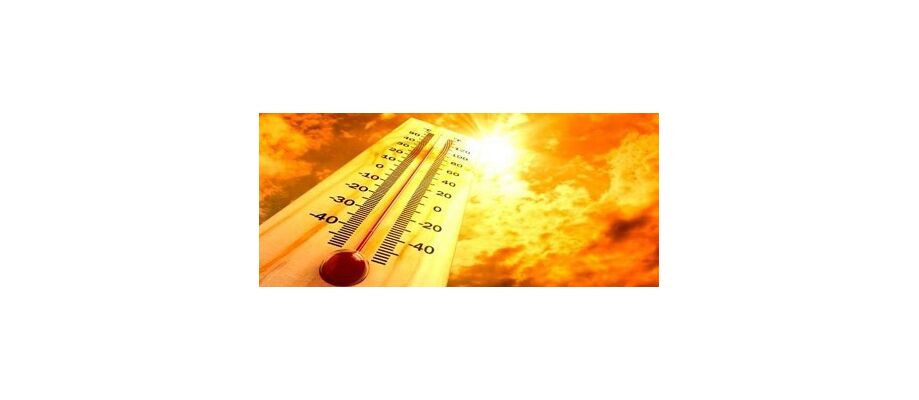Heat: Who and what are at risk?

Heat: Who and what are at risk?
Who are the ones to pay particular attention to?
- The groups of the population that are most vulnerable to the heat wave are:
- The extreme age groups (infants, children, elderly).
- Patients suffering from chronic diseases (e.g. cardiac, respiratory, diabetes, etc.) or from serious neurological or psychiatric diseases, as well as people with obesity.
- People receiving medication with anti-hypertensives (eg diuretics, beta-blockers) and other drugs such as antidepressants, antipsychotics, antihistamines and anticholinergics.
- People who work or live outdoors or are athletes, people who consume a lot of alcohol or use drugs.
Heat: What are the vulnerable groups at risk of?
From Dehydration of the body: The symptoms of mild dehydration are headache, fatigue, dizziness, decline in mental function, etc.
From Heat Exhaustion, symptoms of heat exhaustion are:
- Severe headache, weakness, fatigue, tendency to faint, pale, cold and clammy skin, drop in blood pressure, nausea, vomiting, muscle cramps, tachycardia, normal (usually) body temperature.
First Aid in case of heat exhaustion:
Move the patient to a cool, airy, shaded or air-conditioned area or under trees if there are any •Give the person to drink slowly cool water (not iced). No alcoholic drinks or liquids containing caffeine (coffee, caffeinated soft drinks) are allowed. •Loosen or remove clothing that may be bothersome •Use cold water wet towels or sheets to cool his body •Make sure the sufferer sits comfortably and monitor him for any changes in his health condition. If there is no improvement, it is advisable to be transferred to the hospital.
- From Heatstroke: It is a serious condition where immediate medical assistance must be provided or the person transported to a hospital.
The symptoms of heatstroke are:
• increased body temperature (>40.5 oC)
• hot and red skin, with no sweating
• vomiting, diarrhea
• tachycardia
• severe headache
• blood clotting disorders
• behavioral disorders, confusion
• loss of consciousness or coma
Until the person is transferred to a hospital, you can proceed with the following actions:
• Transfer the patient to a cool, airy or air-conditioned area
• Reduce the temperature of the patient's body with cold patches (e.g. wet sheets, ice packs) or with bathing in a bathtub with cool water
• Do not give fluids by mouth
Heat protection guidelines
• Avoid sunbathing and stay in shady and cool places without overcrowding.
• We avoid heavy physical work especially in places with high temperature, apnea and high humidity, long hours of walking or running under the sun and long hours of travel by public transport.
• We take lukewarm showers during the day and if necessary we place wet covers on the head and neck.
• We wear light, comfortable and light-colored clothes made of natural material, a hat and black or dark glasses with a special coating that protect against the reflection of the sun.
• We prefer light and small meals, with emphasis on fruits and vegetables.
We limit fats. Drink plenty of fluids (water and fruit juices). If we sweat a lot, we add salt to our food. We avoid alcoholic beverages.
• We take care of our family members suffering from chronic diseases (respiratory, cardiovascular, etc.). We consult their attending physician for the application of special instructions and for those taking medication. If we have infants and children
• We dress them as lightly as possible. We make sure that their arms and legs are free and not wrapped in diapers.
• We make sure that they do not stay in the sun after swimming in the sea and that they always wear a hat.
• In addition to milk, other fluids are recommended. We consult the pediatrician.
• For older children, we make sure they drink plenty of fluids (water and fruit juices) and eat more vegetables, fruits and less fat. If we have elderly people
• We move them to cooler areas or areas, or make sure they stay in the lower apartments of high-rise buildings. We open the house at night to cool and keep it tightly closed during the hot hours of the day.
• We do not leave elderly family members alone during summer holidays or when we are away from home for several days.
Source: General Secretariat of Civil Protection
- 185 Pelopida, Peristeri 12137 Athens
- 2105738672
- Mon - Fri 08:30-14:30 & 17:30 - 20:30
Sat 10:00 - 14:30 - info@pharmacy4cure.gr
- Contact form
- Open on map

